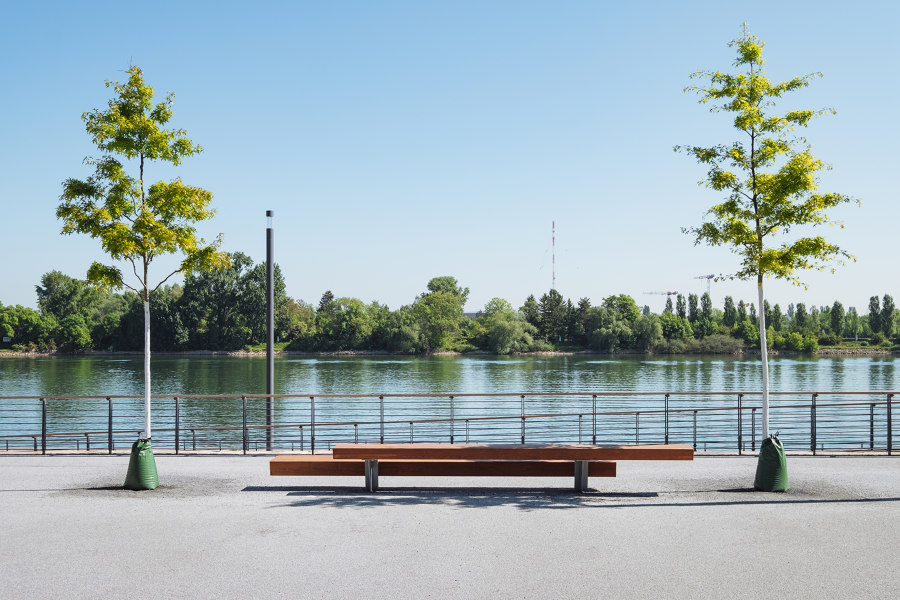
Fotografo: Nikolai Benner
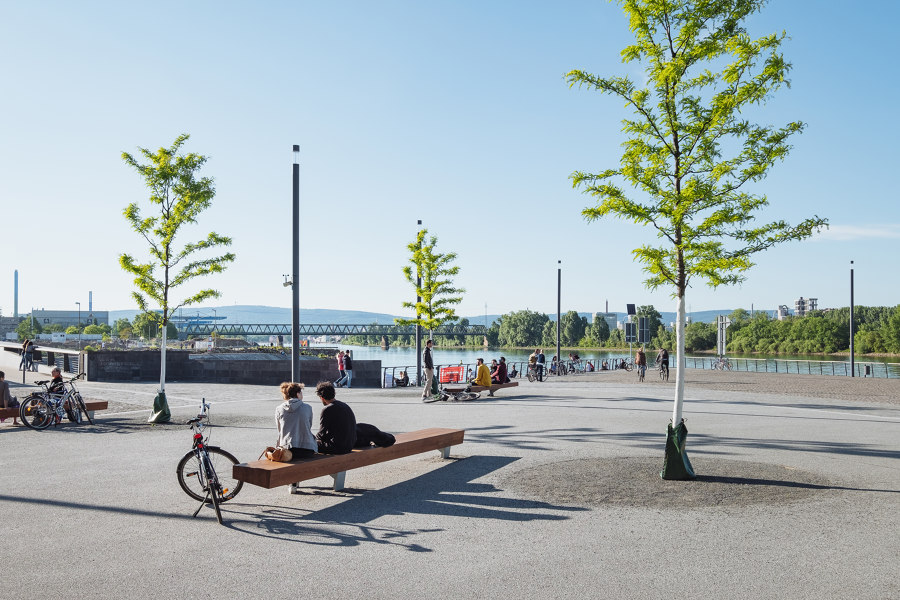
Fotografo: Nikolai Benner
This development on the bank of the Rhine rests within an ancient river port where the robust, coarse language characteristic of port activity fills the air even today. The open spaces have been designed by conserving the original materials and elements present in the setting.
The arrangement of Zollhafen surrounds the old docks, connecting them to the new residential district by a layer of recycled paving slabs that fuse with the new pavement. The contrast between the robustness of yesteryear and the simplicity and comfort of the borders that bind the residential areas to the docks constitutes the primary feature in this project.
By using as the starting point a limited selection of materials that imbue a robust, raw language, the project unfolds by creating an interplay between dimensions, greenery and urban furniture, thereby creating a host of different spaces around the whole layout. The riverside docks on the north and south are connected via a new bascule bridge for pedestrians and cyclists, which sits on the historic route.
The Trapecio bench, designed by Antonio Montes and Montse Periel and edited by Urbidermis, fits in seamlessly with the project plans on account of its simplicity and the materials used in its design. The robust yet cutting-edge nature of this bench endows it with the characteristics needed, providing meeting points and rest areas along the whole route of the project for residents and visitors alike. The big glued laminated larch timber beams and the galvanised steel paint finish supports generate an interplay with the various green, cobblestone areas.
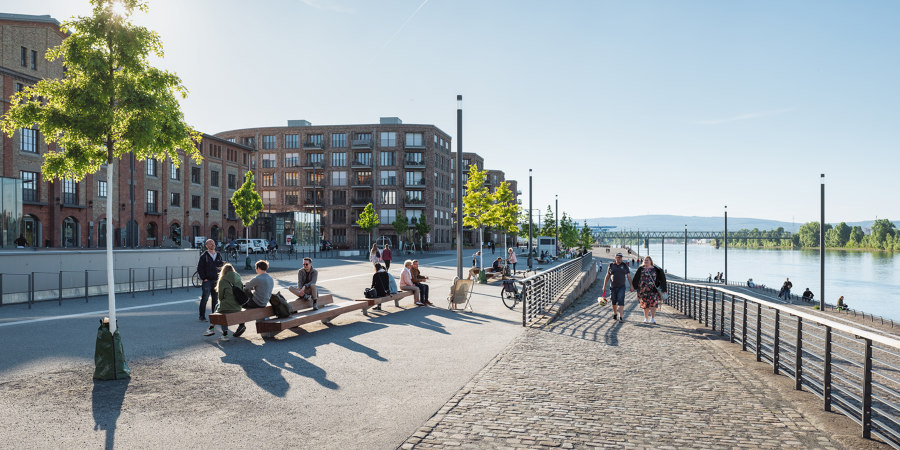
Fotografo: Nikolai Benner
architect
SINAI Gesellschaft von Landschaftsarchitekten mbH
client
Mainz City Hall
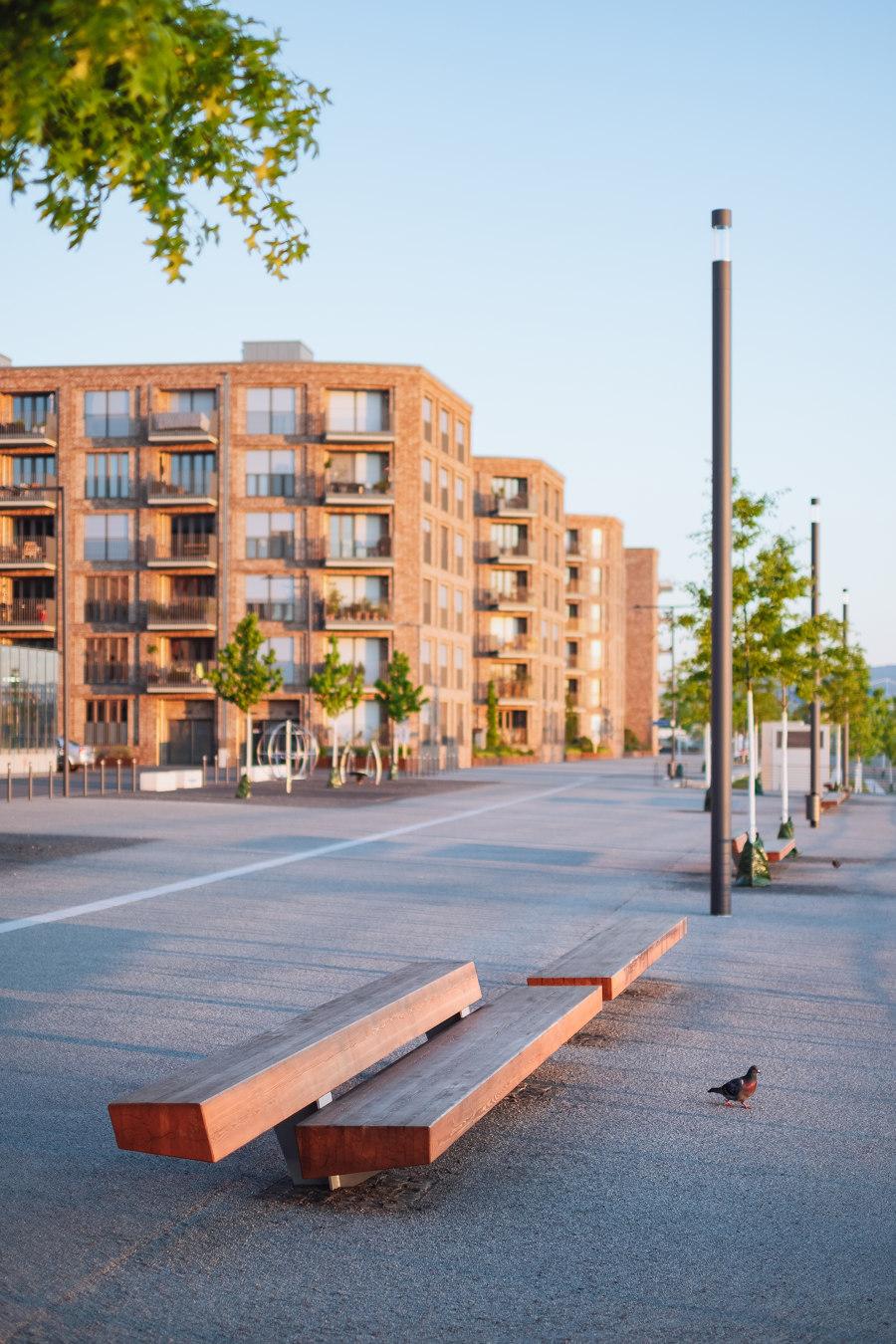
Fotografo: Nikolai Benner
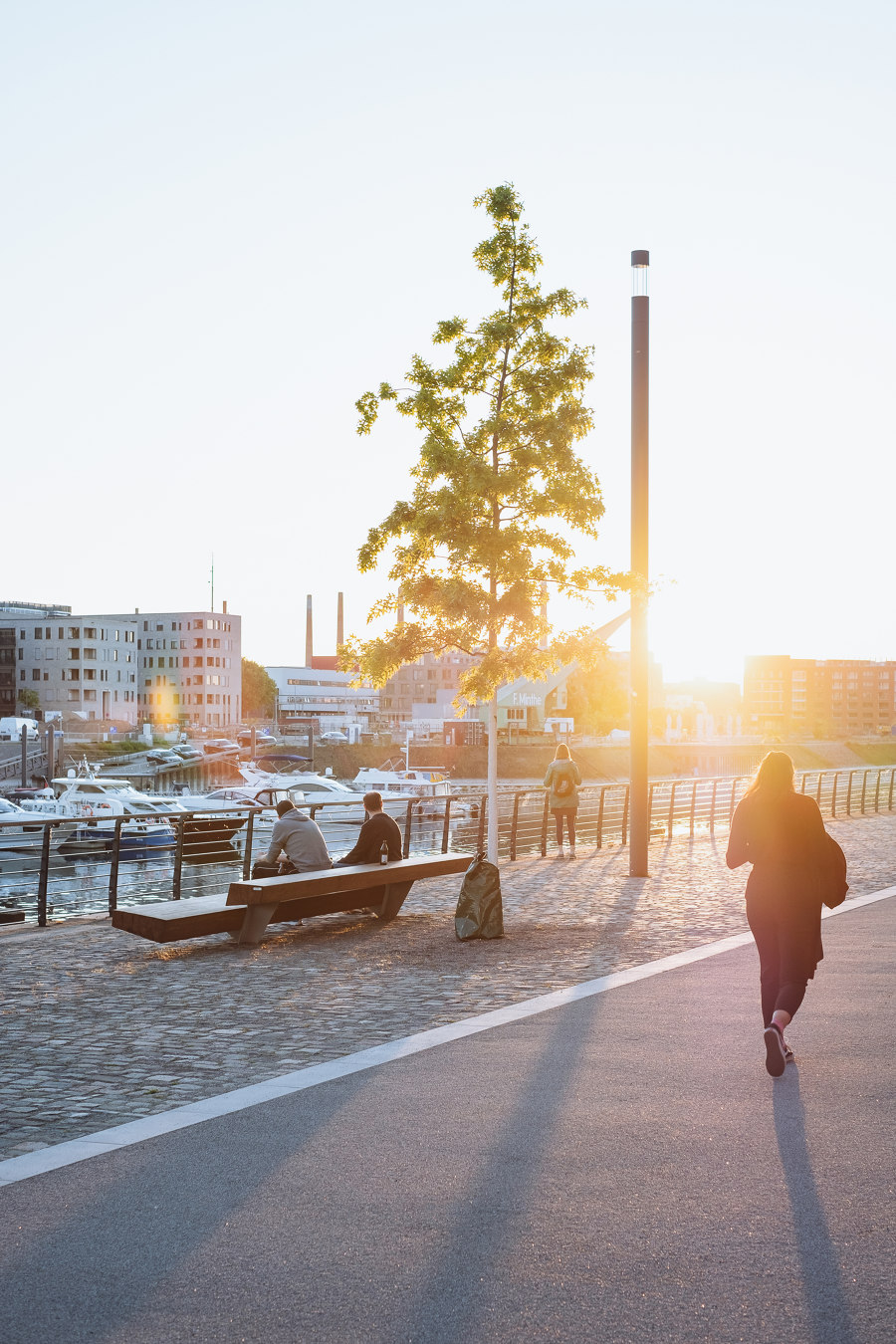
Fotografo: Nikolai Benner





